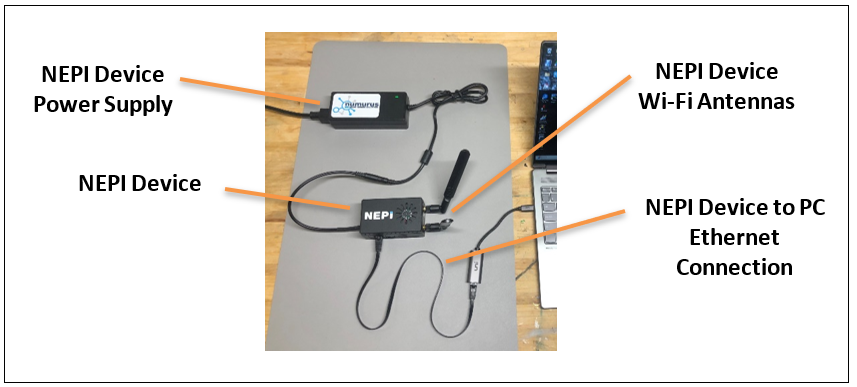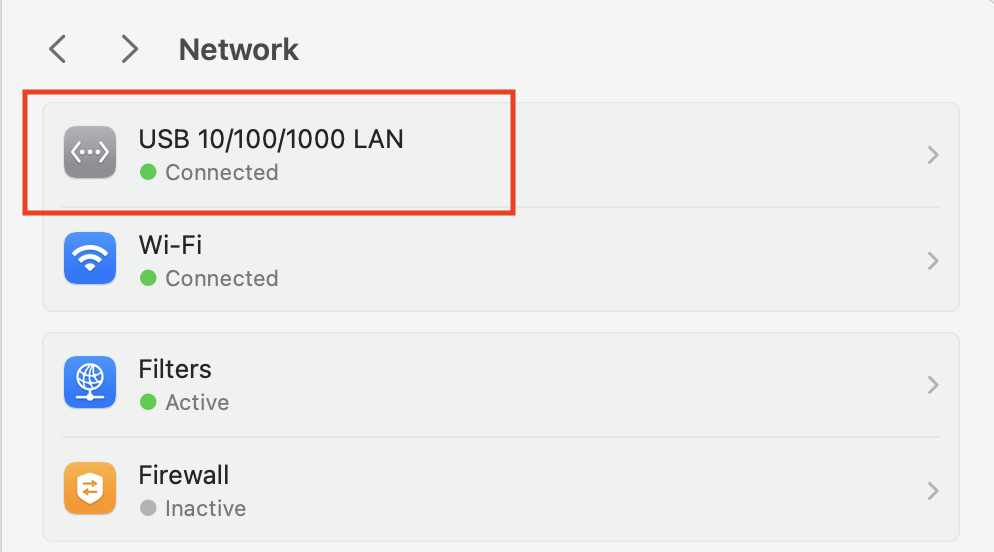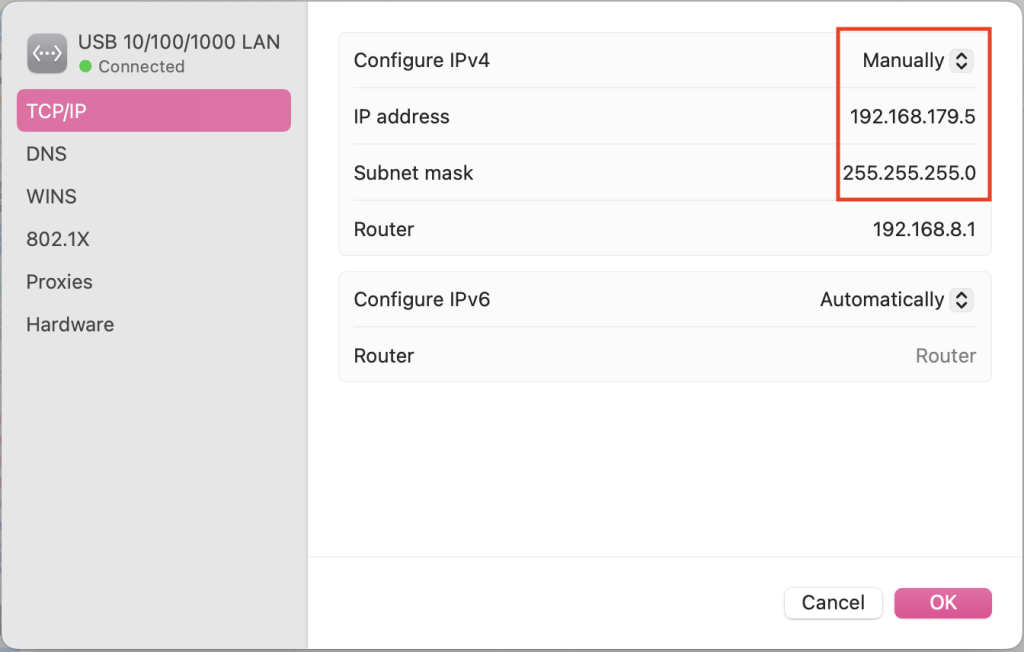NEPI Engine – Connecting and Setup
Introduction
This tutorial covers connecting and configuring NEPI Engine software running on an NVIDIA Jetson or other edge-compute hardware. This tutorial assumes you have a working NEPI Engine enabled edge compute platform.
What you will need
1) 1x NEPI-enabled device.
2) 1x PC with Ethernet network adapter and WiFi support. This tutorial uses a Windows 11 PC and a USB GigE Ethernet adapter.
3) 1x Ethernet Cable
Hardware Setup
1) Connect your NEPI device to your PC’s Ethernet adapter using an Ethernet cable, then power your NEPI device.

Connecting a PC to a NEPI Device
Connecting with a Network Cable on Windows
On the PC, you will need to configure the Ethernet network adapter with a static IPV4 address on the same subnet that your NEPI device following the steps below. The NEPI software uses a default subnet of 192.168.179.0/24 with the device configured for IP address 192.168.179.103.
Example: PC Network Adapter Settings
IP Address: 192.168.179.5
Submask: 255.255.255.0
1) Right click on the “Connection” icon in your PC’s menu bar and select the “Network and Internet settings” option.

2) Select the “Ethernet” line from the list of options shown.

3) Select the “Edit” button next to the “IP assignment” menu item

4) Select the “Manual” option then turn on the “IPv4” switch in the popup window that appears.

5) Enter 192.168.179.5 in the “IP address” and 255.255.255.0 in the “Subnet mask” fields, then click the “Save” button.

6) You can test your Ethernet connection to the NEPI device by opening a Command Prompt terminal from the windows “Start” menu, then typing “ping 192.168.179.103”. You should see a valid response like the one below. If not, try power cycling your PC.

Connecting with a Network Cable on MacOS
To connect your Mac directly to a NEPI device over Ethernet, you will configure your Mac’s Ethernet adapter with a static IPv4 address on the same subnet as the NEPI device. NEPI devices use the default subnet 192.168.179.0/24 and the device IP 192.168.179.103.
Example Static Network Settings for macOS
IP Address: 192.168.179.5
Subnet Mask: 255.255.255.0
1) Open Network Settings: Open System Settings. Scroll and select Network from the sidebar.
2) Select Your Ethernet Interface: Choose Ethernet from the list of available network interfaces.
NOTE: If you do not see Ethernet listed, plug in your Ethernet adapter and reopen Network settings.

3) Open IP Configuration: Select the Details button next to Ethernet, then choose the TCP/IP tab.
4) Change IPv4 Configuration: Locate the Configure IPv4 dropdown menu and select Manually.
Fill in the NEPI-Compatible Static IP following fields (if not done automatically):
IP Address: 192.168.179.5
Subnet Mask: 255.255.255.0
Select OK, then close the window. Your Mac will now use the static address.

5) Test Connectivity: Open the Terminal app (found in Applications → Utilities → Terminal). Input the following command:
ping 192.168.179.103
NOTE: Press Ctrl + C to stop the ping process and return to the normal Terminal prompt.

Connecting Over WiFi
While you will initially need to connect to your NEPI device through a direct ethernet cable, if your NEPI device has WiFi support, you can configure a NEPI WiFi access point to connect to it in the future over WiFi. See the “Setting up a NEPI WiFi Access Point” section of this tutorial for instructions on setting up a WiFi access point on your NEPI device.

